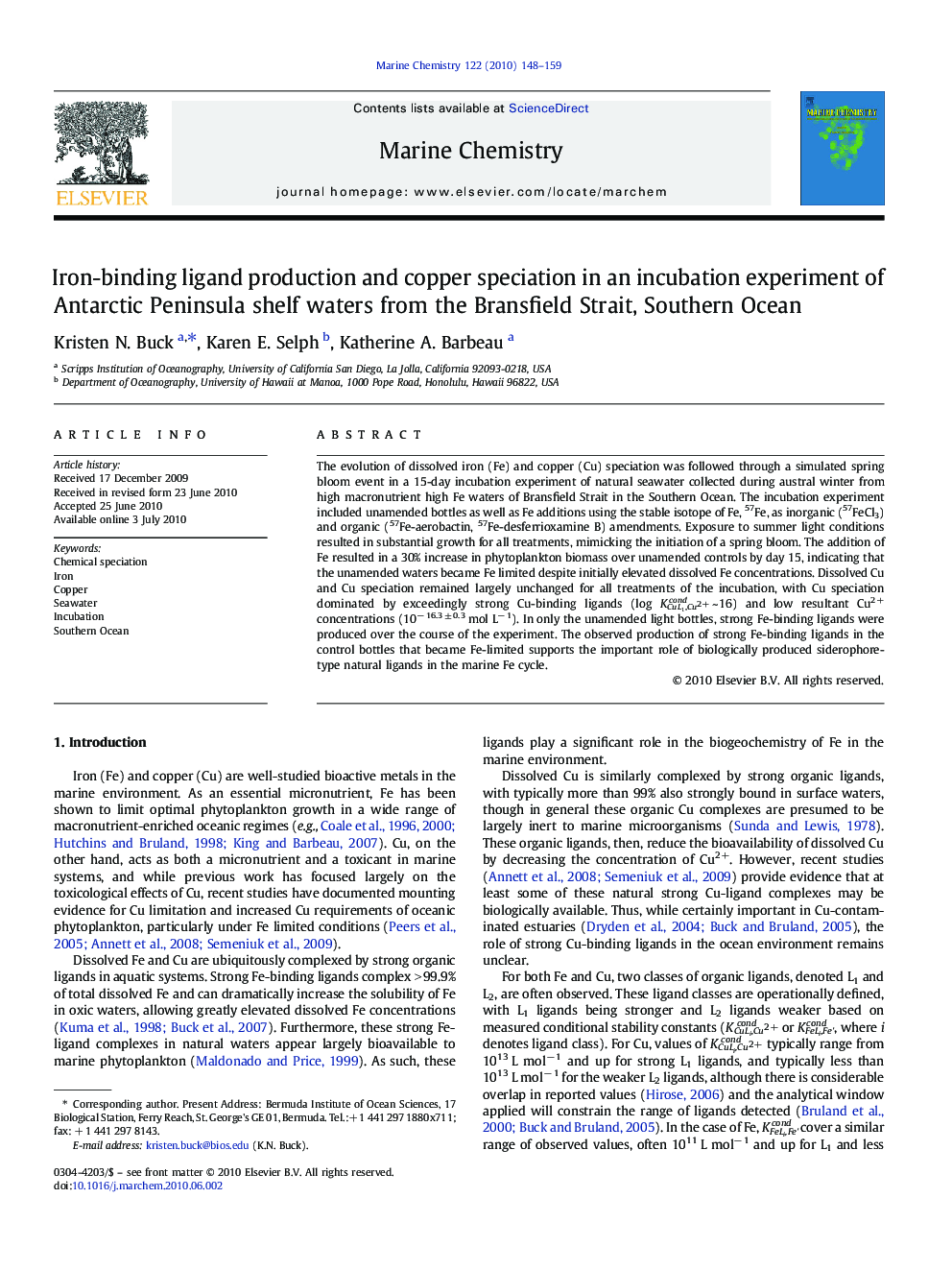| Article ID | Journal | Published Year | Pages | File Type |
|---|---|---|---|---|
| 1263359 | Marine Chemistry | 2010 | 12 Pages |
The evolution of dissolved iron (Fe) and copper (Cu) speciation was followed through a simulated spring bloom event in a 15-day incubation experiment of natural seawater collected during austral winter from high macronutrient high Fe waters of Bransfield Strait in the Southern Ocean. The incubation experiment included unamended bottles as well as Fe additions using the stable isotope of Fe, 57Fe, as inorganic (57FeCl3) and organic (57Fe-aerobactin, 57Fe-desferrioxamine B) amendments. Exposure to summer light conditions resulted in substantial growth for all treatments, mimicking the initiation of a spring bloom. The addition of Fe resulted in a 30% increase in phytoplankton biomass over unamended controls by day 15, indicating that the unamended waters became Fe limited despite initially elevated dissolved Fe concentrations. Dissolved Cu and Cu speciation remained largely unchanged for all treatments of the incubation, with Cu speciation dominated by exceedingly strong Cu-binding ligands (log KCuL1,Cu2+cond ~ 16) and low resultant Cu2+ concentrations (10− 16.3 ± 0.3 mol L− 1). In only the unamended light bottles, strong Fe-binding ligands were produced over the course of the experiment. The observed production of strong Fe-binding ligands in the control bottles that became Fe-limited supports the important role of biologically produced siderophore-type natural ligands in the marine Fe cycle.
